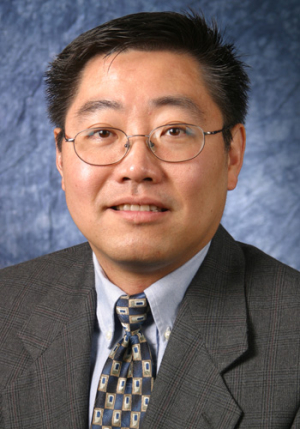In an effort to reduce electromagnetic interference in electronic devices, engineering professors at the University of Houston and the Missouri University of Science and Technology are launching the Center for Electromagnetic Compatibility.
Funded with a five-year, $600,000 National Science Foundation grant as well as $300,000 in added annual support from industry for each institution, researchers at the center will work with industry to assess the design of everything from wireless enabled laptops to pacemakers—increasing their reliability and reducing susceptibility to interference.
“There are lots of challenges facing industry,” said Ji Chen, associate professor of electrical and computer engineering and one of the principal investigators named on the NSF grant. “Academia can help them to understand the mechanism, the physics behind their problems. If they understand the physics they can make much better, safer products.”
Sites at both institutions, which make up the center, will look at the cause of electromagnetic interference (EMI), responsible for disrupting or degrading authorized electronic emissions over approved portions of the electromagnetic spectrum.
Research by Missouri and UH will work to identify the underlying cause of EMI problems, which for example, may include everything from hearing a passing truck’s CB radio over the FM station playing in your car to the ventilator at a hospital abruptly changing its breath rate.
The institutions will offer industry design guidance for electronic products, addressing problems like these and increasing products ability to reliably perform in environments containing significant levels of electromagnetic noise.
At UH the majority of research by Chen and fellow electrical and computer engineering professors Donald Wilton, Richard Liu and David Jackson will focus on resolving issues with medical devices such as the pacemaker.
UH has teamed with St. Jude Medical, Medtronic and the U.S. Food and Drug Administration to look at concerns over tissue damage when pacemaker patients are exposed to an MRI as well as the interaction between the implanted device and airport security scanning systems, cell phones and vehicle-mounted antennas. All four will work to make the design of the pacemaker more reliable, Chen said. This would allow patients to undergo an MRI without the risk of being burned or give them the ability to walk through airport security scanning systems as regular airline passengers.
Establishing the NSF funded center, especially with an institution like Missouri— one of the best research groups in the specialized area of electromagnetic compatibility—is a big step for the college, said Joseph W. Tedesco, Elizabeth D. Rockwell Endowed Chair and dean of the Cullen College.
“This effort clearly demonstrates the direction the college is heading,” said Tedesco. “Two of the college’s strategic initiatives, which will help boost the university to tier one status, involve the establishment of nationally funded research centers and the development of robust research partnerships with industry. Indeed, we are very excited about this research effort and its expected impact.”
In the near future, Chen said, it is expected two other institutions will be added to the center—Clemson University and the University of Oklahoma. Researchers from the four universities will address EMI on a wide variety of levels including electromagnetic pulse effects on microprocessors, the effects of an individual’s long-term exposure to electromagnetic fields and digital and RF interference.
